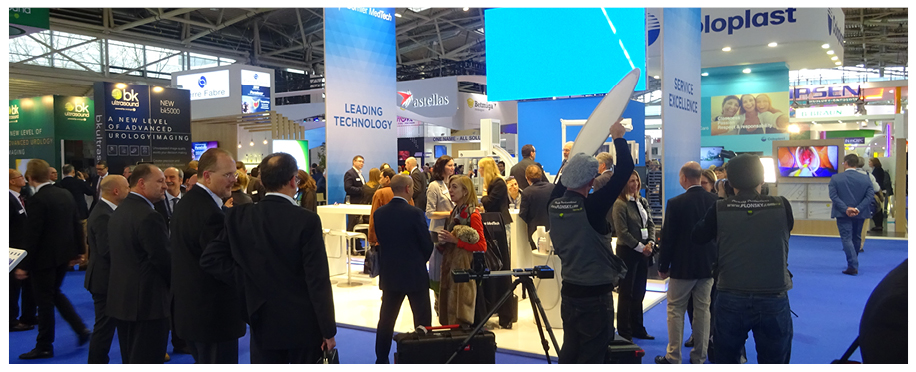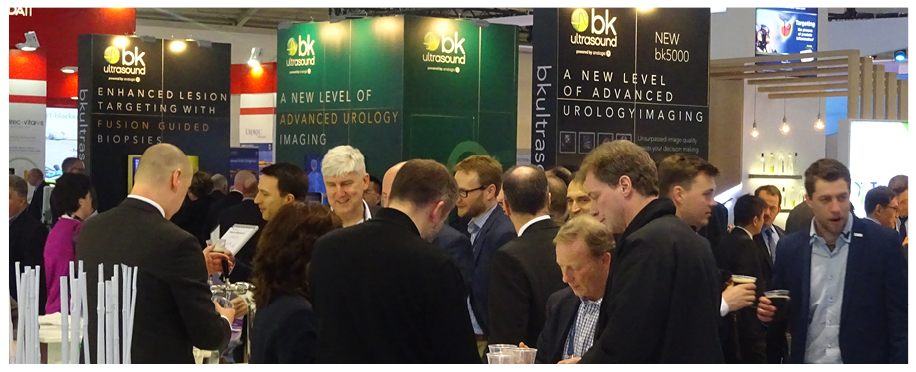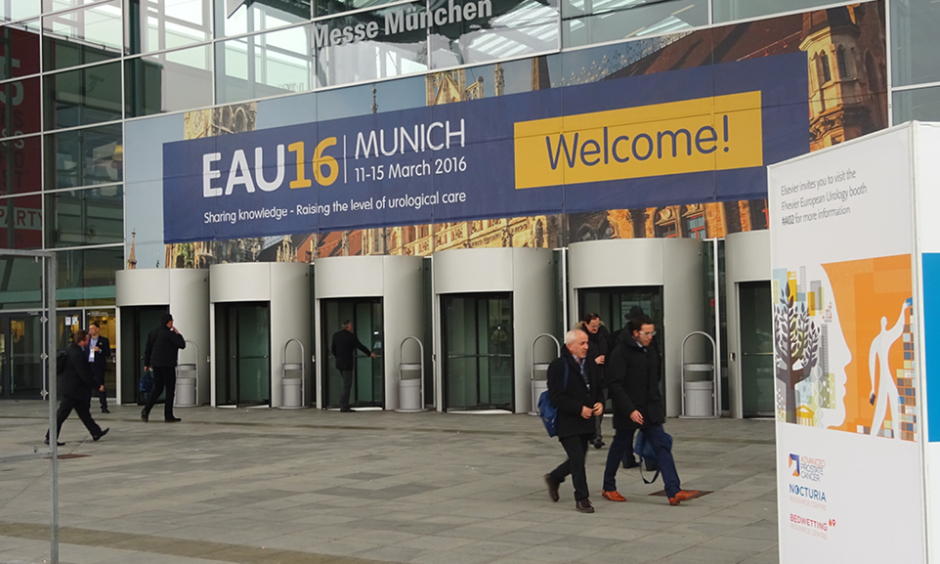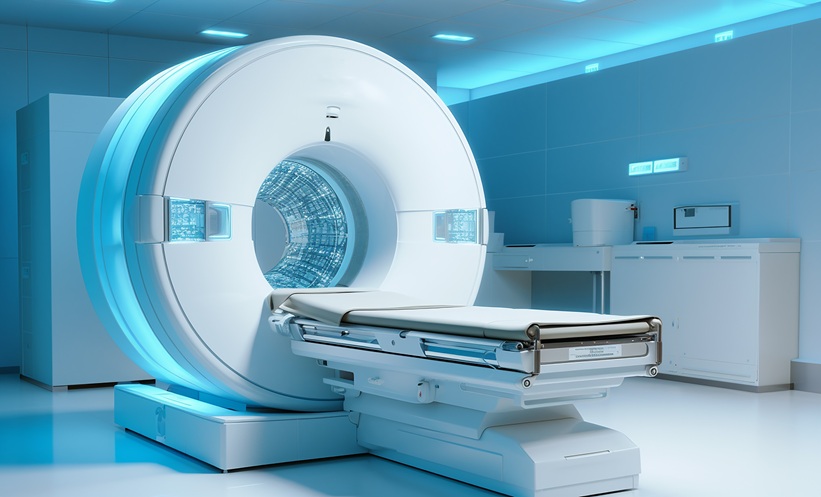Being home to more than 200 biotechnology companies, and having once been voted the world’s most liveable city, Munich, Germany, was a perfect host for the extensive collaboration and innovation that took place at the EAU16 congress. During this time, the city warmly welcomed the more than 13,000 attendees to the prestigious event proving their motto, ‘Munich likes you’, true.
Representing 118 countries and around 200 companies, delegates discussed a huge variety of ideas between the rooms and halls of the Internationales Congress Center München, Munich; these ideas were presented over the course of more than 300 sessions by 1,425 speakers. The result was that a culmination of over 4,400 scientific pieces were displayed and disseminated at EAU16. The impact of the event was clear, with almost 17,000 tweets shared by 1,600 people discussing the various innovations and information on show. “Nothing would happen without being made to happen” stated Prof Chris Chapple, EAU Secretary General, during the opening ceremony, as he spoke on the continuing efforts of urologists to bring forth new developments and challenge new issues in medicine.
An abundance of awards were presented at this year’s EAU congress, where many urologists were recognised for their contributions to the field. The first award of the congress was the EAU Willy Gregoir Medal, EAU’s highest honour, which was awarded to Prof Walter Artibani (Italy) for ‘a significant contribution to the development of the urological specialty in Europe’. Prof Arbitani commented on how overwhelming it was to receive such an honour. The EAU Innovators in Urology award was presented to Prof Josep Maria Gil-Vernet Vila (Spain) for his work in educational surgical videos.
Prof Alberto Briganti (Italy) was one of the youngest ever recipients of the Crystal Matula award, a prize given to a promising new urological academician. The Hans Marberger award for the best paper published in the field of minimally invasive surgery in urology was given to Prof Mohan Gundeti (USA), for his fascinating paper on the use of robots for minimally invasive surgery. Finally, honorary memberships were awarded to Prof Per-Anders Abrahamsson (Sweden), Prof Jalil Hosseini (Iran), Prof Günter Janetschek (Austria), Prof Michael Marberger (Austria), Mr Keith Parsons (UK), Dr Ying-Hao Sun (China), and Dr Vladimir Tkachuk (Russia).
A multitude of information was available at the event for all delegates to take in with a number of presentations on display that outlined significant advancements in the field. These included a study which found a number of novel non-coding RNA sequences that could be used for the detection of prostate cancer, a discovery that has the potential to reveal much more about the pathogenesis of many cancers. There was also much discussion about the improvement of patient care in a variety of contexts, such as the use of active surveillance in men with low-risk prostate cancer, and a fascinating observation of the use of telemedicine, whereby informational videos are utilised to prepare patients for surgery rather than the traditional doctor-patient interview.
In our review, you will find a number of short articles on the highlights from EAU so that you can catch-up on or look back at some of the innovations and ideas that arose at the congress. We also feature a number of abstracts summaries from the congress, which display the quality of the ongoing work in the field of urology. The congress was a great success, and we are already looking forward to EAU17, which will be held in London, UK in March 2017.

Novel Non-coding RNAs Provide Hope for Better Diagnostics in Prostate Cancer
GENETIC MARKERS of disease are becoming increasingly useful clinically; a recent study has found a number of novel non-coding RNA sequences that could be used for the detection of prostate cancer (PCa). The current markers, prostate-specific antigen and PCA3, are inaccurate, possibly leading to false positives, or failing to detect cancer. It has been suggested that a more consistent, specific test is required, one that would make population testing viable.
A growing body of research now suggests that RNA, or more specifically, sequences of RNA termed non-coding RNA, has a greater array of functions than previously thought. Importantly, non-coding RNA may be implicated in pathological processes such as cancer development.
In one study presented at EAU16, 64 PCa biopsies were reviewed, with 200 million sequences read from each sample. The result was the identification of >2,000 genes, which were significantly different in tumour samples compared with control samples, several of which showed increased sensitivity and specificity over current diagnostic markers.
Furthermore, many of these biomarkers could be reliably detected in urine.
“This is a new approach to developing diagnostic tests, and comes from applying real basic science to a practical clinical problem. Given that our initial results show a high specificity for PCa in urine tests, the prospects are good that we will be able to translate this into a better test for PCa,” explained Prof Manfred Wirth, University of Dresden, Dresden, Germany in a press release dated 13th March 2016. “We have several good candidate biomarkers, however we are aiming to design a test which utilises a combination of biomarkers. This will give significantly better specificity than existing tests. Our work on RNAs is allowing us to design a completely new kind of PCa test.”
This research is still in its infancy and has the potential to reveal much more about the pathogenesis of many cancers; for example, the team discovered one non-coding RNA, labelled TAPIR (tumour-associated proliferation-inducing RNA), that may be involved in halting the growth of cancers.
Tablets Over Talking: Is Telemedicine the Future?
‘TELEMEDICINE’ is becoming increasingly important in patient interactions, particularly in informing and reassuring patients. As a result, the process by which informed consent is achieved became a key talking point at EAU16 where Australian researchers compared the use of informational videos to prepare patients for surgery against traditional patient-doctor interviews.
While it is hugely important that patients understand the medical procedures that they are to undergo, frequently patients give consent without full comprehension of the procedure. In a recent randomised controlled study, 80 patients undergoing surgery for acute renal colic were randomised to either view a video presentation featuring a cartoon animation narrated by a doctor on an iPad or tablet (n=36), or receive face-to-face counselling with their doctor (n=44). Subsequently, lead researcher Dr Matthew Winter, Royal North Shore Hospital, Sydney, Australia, and colleagues checked for both patient understanding and satisfaction by administering questions on the procedure. Following this, patient crossover occurred; each patient then received the same questionnaire and was asked to rate their overall preference for information delivery.
“Patients often find it difficult to comprehend their planned procedure. We have found patients’ knowledge is greatly improved through the use of portable video media and is their overall preferred method of information delivery compared with standard verbal communication” stated Dr Winter.
The results were significant, with 80.7% of patients conveying a preference for the video, compared with 19.3% of patients who preferred the face-to-face meeting. The study also demonstrated an improvement in patient understanding of 15.2%, thought to be related to the patients being able to appraise the video at their own pace, before reviewing the procedure with their doctor.
Commenting on the applications of the technology, Dr Winter said in a press release dated 14th March: “Informed consent for patients undergoing procedures is both an ethical and legal responsibility, and crucially important for optimising treatment…. Through the use of portable video media, a doctor can present his/her own practice and procedural technique in an innovative, dynamic, and engaging manner.”
The Variable Nature of Kidney Donations Across Europe
SIGNIFICANT variations in the number of kidney transplant (KT) donors between European countries, likely as a result of the differing legal and social standards across the continent, have been revealed in a recent study.
Kidney failure can result from a variety of disorders or events, including diabetes, injury, high blood pressure, and drug overdose. Rates of chronic kidney disease are variable across European populations, but are increasing universally. Kidney dialysis is a common treatment, but kidney donation is the most effective long-term solution. Nonetheless, the nature of kidney donation and management of their supply varies significantly from country to country.
“As the technology becomes more mainstream, and rates of kidney failure are increasing, the demand for organs has increased quite significantly, and there is a general need to obtain more organs. At the moment, whether you can find a donor organ largely depends on where you live. If countries want to increase transplant rates, and so increase survival from kidney failure, they might consider changing the way they source donor organs,” said Dr Víctor Díez Nicolás, Department of Urology, Hospital Universitario Ramón Y Cajal, Madrid, Spain, in a press release dated 13th March from EAU16.
The study, analysing KT activity across Europe in 2014, has illustrated the heterogeneity of kidney transplant activity across the continent. For example, there were 35.7 deceased donors per million population (pmp) in Spain, compared with 10.4 in Germany. The authors interpreted these figures as a reflection of differing transplant management; Spain has an opt-out scheme whereas Germany has an opt-in scheme. In some countries, living-donor transplants made up 100% of the total figure, whilst only 11 countries operate an active non-heart-beating-donor programme.
The Netherlands lead in KT activity, with 59.8 KT pmp, and the study has highlighted the need for leadership by the most active countries in organ donor management to assist in the implementation of similar strategies elsewhere in Europe.

Lower Urinary Tract Function: The Geriatric Perspective
OPTIMAL care of lower urinary tract (LUT) problems in the elderly population emerged as a central issue in an in-depth session at EAU16. A topic of wide scope, the lectures naturally ranged in focus, yet the overall message was clear: more research and more refined guidelines for treatment are necessary.
The severity of incontinence problems can be mediated by the maintenance of healthy practises in mid-life; however, age-related physical changes complicate matters from both the patient and physician’s perspective. In terms of the patient, changes in metabolism, hormonal environment, morphology, and cerebral control can serve to compound the problem. In women, for example, childbirth or pelvic surgery may later lead to pelvic organ prolapse, a condition affecting approximately 50% of women >50 years old. For the physician, this complexity necessitates a comprehensive understanding of all the impacting factors, the interaction and outcome of which is difficult to control. Thus, “it could be that the next catch-phrase would be preventative geriatrics,” said Prof Adrian Wagg, Chair in Health and Ageing, Medicine and Dentistry, University of Alberta, Edmonton, Canada.
Speakers cautioned against surgical treatment for LUT problems in older patients, particularly with regard to benign prostatic obstruction, as these patients are more vulnerable to post-surgery complications such as thromboembolism, loss of muscle mass, and blood pressure change.
Further obscuring the problem of optimal care of LUT problems in the elderly is the ‘evidence-practice gap’, as stated by Prof Wagg. The efficacy of antimuscarinic drugs in those aged 65–75 years has been supported by certain studies, and a Fit fOR The Aged Classification (FORTA) currently lists approximately 200 drugs in >20 therapeutic areas that are relevant to the elderly population. He added, “although we have more evidence, we need still more in older age groups, from pragmatic clinical trials. And we need to proactively seek treatment-related adverse events.”
Statin Use May Reduce Prostate Cancer Patient Mortality
RESULTS of a comprehensive study including >30,000 patients from the Danish Cancer Registry suggest that the use of statins by prostate cancer (PCa) patients can lead to a reduction in mortality.
Recent studies have indicated that statins, which are commonly prescribed as a cholesterol-lowering medication, may have beneficial effects for PCa mortality. However, the results have remained inconclusive due to the risk of a type of sampling bias termed the ‘healthy user bias’, which refers to the risk that the group of statin users included in the study may be healthier than the control group. This study is unique in that its design allows control of this potential bias.
Lead researcher, Dr Signe Benzon Larsen, Danish Cancer Society, Copenhagen, Denmark, commented: “Several studies have shown an association between statin use and lower PCa mortality, but the exact relationship has been open to doubt. Due to the unique health care registries in Denmark, we were able to investigate the effect of statins both before and after PCa diagnosis and the effect of type and dose of statin use. This means that we have probably the most extensive data so far indicating that statin use is associated with improved mortality outcome.”
The researchers identified all 31,790 Danish men diagnosed with PCa from 1997–2012, 6,675 of whom had used statins within 3 years prior to diagnosis, and 6,780 that had used statins after diagnosis. Results demonstrated that statin users have a reduction of around 19% in all-cause death, and a 17% reduction of PCa death, indicating that statin use lowers mortality in PCa patients.
Prof Bertrand Tombal, EAU Scientific Congress Committee, said: “Whilst awaiting the results of the ongoing trials, this study increases the evidence that statin use may be an easy add-on prescription to lower mortality from PCa. Given their excellent safety profile, their well-established benefit on metabolic syndrome, and their relatively low cost, statins are an option that should be discussed with our PCa patients.”
Blood Test Enables Prediction of Prostate Cancer Aggressiveness Preoperatively
HYPOGONADISM, or low testosterone levels, may serve as an indicator of pathological stage of prostate cancer (PCa) in preoperative patients, following a simple blood test, according to a study presented at EAU16.
The Gleason pattern is a common measure of tumour severity in PCa patients; a score of 1 equates to normal cells in a tissue sample, and a score of 5 suggests near complete tissue cell takeover. PCa is the most common male cancer, and mortality is high in patients whose tumours show Gleason pattern 5. Research shows that hypogonadism and levels of sex-hormone-binding globulin can predict the severity of PCa prior to a radical prostatectomy (RP).
In a press release dated 12th March, Dr Marco Moschini, Department of Urology, San Raffaele Hospital, Milan, Italy stated that “there is an urgent need for new research to uncover the role which hormones play in prostate cancer development,” while Prof Alexandre de la Taille, Chairman, Department of Urology, CHU Mondor, Assistance Publique des Hopitaux de Paris, Paris, France commented, “these cancers, developed in this special hormonal environment, are probably due to different molecular pathways and represent a new field to explore.”
The study included 1,017 patients with no previous hormone treatment, undergoing RP at one institution. Serum hormone levels were measured the day before the surgery to define those with hypogonadism. In the retrospective analysis, 118 patients showed Gleason pattern 5; hormone levels were found to be independently associated with this score. Hypogonadism has been linked to higher rates of biochemical recurrence and an advanced pathological stage, and thus may serve to highlight postoperative risk in PCa patients.
“What we do not yet know is if this is an association, or if hypogonadism in some way increases the risk of developing high-grade prostate cancer. If this is the case, then it may be that treating the hypogonadism can lessen this risk, but we need more work before we can be sure of that” added Dr Marco Moschini.

Updates in Non-Muscle Invasive Bladder Cancer from EAU
SIGNIFICANT dialogue surrounded the topic of non-muscle invasive bladder cancer (NMIBC) during the EAU congress, specifically focussing on surveillance for upper tract urothelial carcinoma (UTUC). “The risk of UTUC in bladder cancer patients is a lifelong constant, and high-grade recommendations as to schedule, intensity, and duration of upper urinary tract (UUT) surveillance cannot be made at present,” stated Dr Gianluca Giannarini, Urology Unit, Academic Medical Centre, Udine, Italy, in a thematic session in which the need for an increase in evidence-based guidelines in NMIBC was discussed.
“In terms of the evidence base, we only have retrospective, non-comparative, non-controlled cohort studies at our disposal. There have been a few surveillance protocols for UUT, but these are diverse, non-validated, and mainly stage-adapted” he added. This has left urologists with little to guide their surveillance of NMIBC: “We therefore have no high-grade recommendations on who to monitor, how to monitor, how often, or for how long patients should be monitored for UTUC.”
The potential for a kidney-sparing surgical technique that could be used in place of radical nephroureterectomy was proposed by Dr Sharokh Shariat, Department of Urology, Medical University of Vienna, Vienna, Austria.
Dr Shariat pointed out that in the case of small tumours there is still only the one option: removal of the kidney, and suggested that “at the moment, one size fits all and there is a serious risk of over-treatment.” The various aspects of the kidney-sparing surgery were also scrutinised, including the safety and efficacy aspects, and the criteria for eligibility in patients. “The rationale for kidney-sparing surgery is clear, but I must disclose that data is currently weak. Ureteroscopy is useful for diagnosis, but there is a risk of delaying the definitive treatment.”
Finally, Dr Shariat further recommended the use of digital ureteroscopy for optimal results. Whilst there is clearly still a long way to go in both surveillance and surgical techniques, the advent of new practices such as genomics are a step towards improved care.
Potential Mechanism Uncovered That Explains Correlation Between Sleep Apnoea and Poor Cancer Outcomes
HYPOXIA-related angiogenesis could represent the hidden mechanism behind increased cancer aggressiveness and mortality associated with sleep-disordered breathing (sleep apnoea), according to an animal study presented at EAU16.
Though the association between worse cancer outcomes and sleep apnoea remains cloaked in controversy, recent evidence has led to increased support for the idea. Intermittent hypoxia is one consequence of sleep apnoea, a condition that has also been linked to an increased risk of stroke and high blood pressure.
In a murine study, which included 24 mice, each mouse had a subcutaneous kidney tumour and was allocated to either the experimental (n=12) or the control group (n=12), researchers were able to demonstrate that intermittent hypoxia promotes the formation of blood vessels within tumours. It is thought that this effect is a result of increased production of vascular endothelial growth factor (VEGF).
In the study, mice in the experimental group were subjected to varying oxygen levels (mimicking intermittent hypoxia). The researchers noted an increase in vascular progenitor cells (6.1±0.76 versus 4.5±1.1, p=0.001) and endothelial cells (4.0±0.8 versus 2.5±1, p=0.013) within the tumours of mice who experienced intermittent hypoxia as compared with those in the control group. The researchers also observed an increase in circulating VEGF in the experimental group (306±93 versus 204±45 pg/mL, p=0.001); no significant difference was observed amongst other factors, such as tumour growth.
“Patients suffering from obstructive sleep apnoea usually suffer from intermittent hypoxia at night. This work shows that intermittent hypoxia has the potential to promote the formation of blood vessels within tumours, meaning that the tumours have access to more nutrients,” explained Dr Antoni Vilaseca, Lead Researcher, Hospital Clinic De Barcelona, Barcelona, Spain in a press release dated 12th March.
Despite these thought-provoking results, the authors advise caution in the general interpretation; “This is of course an early animal study, so we need to be cautious in applying this to humans. Nevertheless, this work indicates a plausible mechanism for just why conditions, which restrict oxygen flow to tissues, like sleep apnoea, may promote cancers.”
Frontiers of Prostate Cancer Care
OPTIMISED diagnosis and therapy for patients with prostate cancer (PCa) formed the thematic backbone of a stimulating series of debates, lectures, and a case discussion at EAU16.
Genetic research is proving highly influential in a range of therapeutic areas, and the same can certainly be said of PCa treatment optimisation. Molecular characteristics are able to indicate the rate of disease transition in individual patients; the work of Prof Thorsten Schlomm, Chief Physician, The Martini-Klinik, University Hospital Hamburg-Eppendorf, Hamburg, Germany, aims to champion this finding in PCa management. “In the future we will create a molecular speedometer for each patient in order to precisely predict individual patients’ progress,” he predicted.
Different perspectives on the role of magnetic resonance imaging (MRI) in PCa treatment provided an interesting insight into biopsy strategies. MRI is primarily used to localise index lesion, and was deemed most beneficial for clinical use in those undergoing re-biopsy. MRI/transrectal ultrasound fusion-guided biopsy was discussed as a technique to identify significant PCa minimal cores, and future research will need to explore how to sustain the cost-effectiveness of MRI technology.
Strong debate over the timing of radiotherapy after radical prostatectomy (RP) highlighed contradicting opinions. While some advocated for adjuvant radiotherapy, others argued that early salvage radiotherapy provides better optimisation of survival against adverse effects, and less overtreatment, with Prof Thomas Wiegel, Medical Director Department of Radiation Oncology, Universitätsklinkum Ulm, Germany insisting that there is no overtreatment from adjuvant radiotherapy after RP.
The relevance of classic hormone therapy to current chemotherapeutic approaches was also contended, although ultimately its uses were supported with the caveat that urologists need to be multidisciplinary in their care, and adapt to new technology. This sentiment was echoed in the humorous yet prescient tone of moderator Prof Kurt Miller, Chairman, Department of Urology, Benjamin Franklin Medical Center, Berlin, Germany, who remarked, “of all [the] inhabitants on the planet, none is more resistant to change than humans. Except urologists, of course.”

Surveillance Allows Better Quality of Life Than Treatment in Low-Risk Prostate Cancer Patients
ACTIVE SURVEILLANCE could be the answer to improving the quality of life (QoL) in men with low-risk prostate cancer (PCa).
PCa is the most common male cancer in Europe, with nearly 400,000 new cases each year. Previously, patients were treated with either radical prostatectomy or radiotherapy. Increasingly, research suggests that for those with less aggressive cancers, monitoring of the cancer can be more effective for maintaining QoL.
One study presented at EAU16 compared 121 active surveillance patients with 74 treated with surgery and 232 treated with radiotherapy. The study included patients aged 66–69 years with low-risk PCa followed-up at Year 5 and 10. Two-hundred and four men who did not have PCa were also included for reference. QoL was assessed using the SF-12, EQ-VAS, STAI-6, and EPIC questionnaires.
The study found that patients on active surveillance had a QoL similar to those who did not have PCa, compared to those who underwent treatment. These patients reported better urinary function, less urinary incontinence, and better sexual function compared with men who underwent radical prostatectomy, and significantly better sexual satisfaction scores compared with the radiotherapy patients.
The choice to have either treatment or active surveillance remains a difficult one.
Dr Lionne Venderbos, Department of Urology, Erasmus University Medical Centre, Rotterdam, Netherlands stated in an EAU press release dated 14th March 2016: “When choosing treatment, it is important that men think about the potential side effects that are related to immediate curative treatment, like becoming incontinent or losing the ability to have an erection. When considering active surveillance, they should try to imagine whether living with untreated cancer would cause any stress, or that the follow-up visits lead to stress instead of reassurance.”
This study gives rise to more options for patients with low-risk PCa, although more research is needed beyond questionnaires to elucidate all the risks and benefits of each option.
More Attention Must Be Paid to Complexity of Stone Disease
NUANCED differences in the detection, care, and management of stone disease emerged as a key point of discussion at the recent EAU16 congress. Although slight, these basic differences require shrewd attention in order to improve the prevention and treatment efforts of urologists, with the potential to significantly affect patient quality of life.
Mismatched perceptions of patients and doctors was said to lead to inappropriate and therefore unnecessary protocols for the treatment of stone disease patients. A refined understanding of the complexity of stone formers will further improve physician responses to pain symptoms, dietary needs, and therapeutic requirements. Although complex, this will be far simpler to navigate when armed with a more robust knowledge of the basics, such as urine analysis and relevant patient-specific dietary recommendations. This process can be improved with a metabolic evaluation that focusses on the basics, such as urinalysis, and individualised approaches; for example, a patient with cystine stones may benefit from a different dietary regime to one with uric acid stones.
“Stone formation is complex and we need a deep understanding of issues such as metabolic evaluation,” said Prof Thomas Knoll, Department of Urology, Klinikum Sindelfingen-Böblingen, Sindelfingen, Germany. The need for proper urine collection is particularly important in this regard, and further basic recommendations were made at the talks, such as regular water consumption (2–2.5 L/day), limited sodium and calcium intake, and in some cases restricted oxalate and uricacid intake.
An important debate that related to these themes focussed on the proposed necessity of increased patient-specific care. Forming the essence of the debate, the notion of preventive treatment was posed in opposition to the opinion that increased fluid intake and endourological treatment alone is adequate, whilst also touching on the lack of scientific evidence and poor compliance to therapeutic strategies by patients.
Infertility Linked to Increased Risk of Metabolic Disease in Ageing Men
MEN with fertility problems are predisposed to an increased risk of metabolic disease as they age, according to research presented at EAU16.
Infertility affects approximately 15% of couples, and around half of these cases arise because of male infertility issues. In men with infertility issues, a reduction in life expectancy is also expected; this link has been demonstrated in men with low semen quality.
The reasons for the association have so far remained elusive, and no biochemical markers or prevention strategies have previously been developed.
However, a Swedish research group revealed that they have now measured sex hormone levels and other biochemical parameters in infertile men. The group compared 192 men with a low sperm count with 199 age- matched controls, looking at differences in sex hormone levels between the groups, along with other markers such as bone mineral density (which indicates osteoporosis risk) and HbA1c.
The researchers found that one-third of men under 50 years of age with fertility problems showed biochemical signs of hypogonadism; this is 7-times as common compared with control subjects. Infertile men also had low bone density, which was particularly prominent in men with low testosterone levels, indicating an increased risk of fractures and osteoporosis. Elevated glucose and HbA1c were also observed in hypogonadal men, indicating a predisposition towards diabetes.
Lead researcher Dr Aleksander Giwercman, Chairman, Reproductive Medicine Centre, Skåne University Hospital and Lund University, Malmö, Sweden, summarised in a press release dated 12th March: “We found that a significant proportion of men from infertile couples show biochemical signs of hypogonadism. This may be affecting their fertility, but they can also serve as early warning signs for metabolic diseases in later life, such as osteoporosis or diabetes. We would recommend that levels of reproductive hormones should be checked in all men seeking advice for fertility problems. Those at risk of serious disease should be followed after the completion of fertility treatment.”

Erectile Dysfunction: An Update From EAU
ERECTILE dysfunction (ED), especially following radical prostatectomy was a topic of much discussion at EAU16. ED is a multifactorial condition that is associated with a number of psychological factors. Dr Giorgio Gandaglia, Resident, Department of Urology, Urological Research Institute, University Vita-Salute San Raffaele, Milan, Italy said, “up to 70% of patients still experience postoperative ED, even when a bilateral nerve-sparing approach is performed.”
Various treatments are available for ED, though phosphodiesterase 5 (PDE5 inhibitors) are currently the most effective option. The current evidence for PDE5 inhibitors has arisen from a number of randomised controlled trials, though some concerns exist regarding the selection criteria, follow-up periods, and timing of drug administration within these trials. Dr Gandaglia stated: “A recent study showed that patients at immediate risk of ED after surgery are the ones who benefit most from the use of PDE5 inhibitors and they are the ones that should be targeted.”
Some options for second and third-line treatments exist; however, these are more invasive than oral PDE5 inhibitors. Vacuum erection devices and intracorporeal injections are effective second-line therapies, whereas a penile prosthesis is the only effective third-line treatment in non-responders or in patients who do not comply with earlier treatment options.
One cause of ED is Peyronie’s disease, which has both physical and psychological implications. Dr Evangelos Zacharakis, Consultant Urological Surgeon, Department of Urology, Guy’s hospital, London, UK said: “There have been many oral treatments for Peyronie’s disease, most of which are not effective, apart from pentoxifylline and L-arginine/PDE5 inhibitors. There is limited evidence that interferon and verapamil are effective, whereas the evidence for collagenase is Grade A/Level I.”
The recommendations for surgery vary with the disease but Dr Zacharakis suggested that plication or Nesbit plication is available for deformities of <60˚, while grafting by an experienced surgical team is possible for deformities of >60˚. Many patients do not seek treatment due to embarrassment, with many ignoring milder symptoms.
Urological Infections and Their Treatment Requires Redefinition
ADVANCES in research that have highlighted room for improvement in terms of the management and treatment of urological infections were prevalent in discussions at EAU16. “It is high time to redefine urinary tract infections and urinary tract disorders based on routine test findings only,” counselled Dr Vitaly Smelov, Postdoctoral Fellow, International Agency for Research on Cancer, World Health Organization, Lyon, France. New technology has identified a range of non-culturable bacteria present in urine, which have previously evaded detection in standard tests.
The cautious use of antibiotics in the treatment of urological infections was emphasised at the talk; with over 25,000 deaths per year attributable to drug-resistant bacteria, and a 20–50% rate of unnecessary antibiotic prescription in the USA, stringent management of their use is well supported by the available data. This is particularly relevant in the case of hospital-acquired infections, which are largely antibiotic-resistant.
Past approaches to research were also redefined. “Once upon a time, the bug was the focus. That is history. The host susceptibility caused by genetic polymorphisms is now in the focus and we are just beginning to understand this interplay,” stated Dr Björn Wullt, Consultant, Division of Microbiology, Immunology and Glycobiology, University of Lund, Lund, Sweden. Genetic mapping has great potential to explain host response downregulation and antibiotic resistance, and is thus of significance to therapeutic development.
Other data suggested that 30% of initial urinary catheterisations are unwarranted, indicating a need for better judgement of their use. Nuanced management of infection in neurogenic and non-neurogenic patients was discussed, along with the role of brush cells in the urinary tract. Overall, the meeting provided a comprehensive review of what appears to be a fresh slate in urological infection research for 2016.








